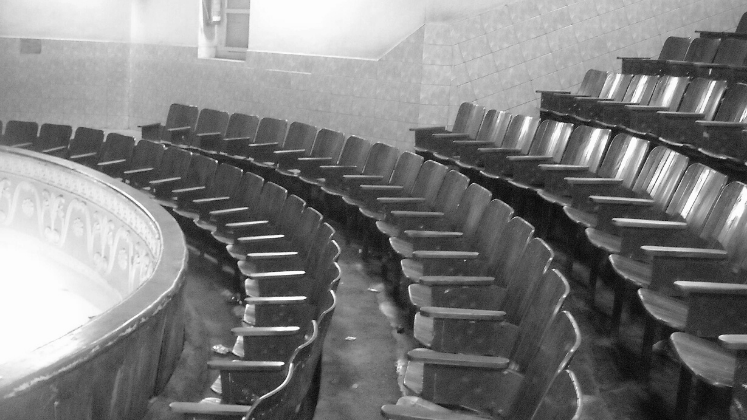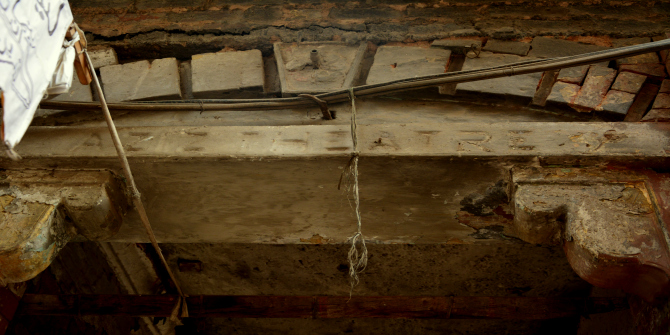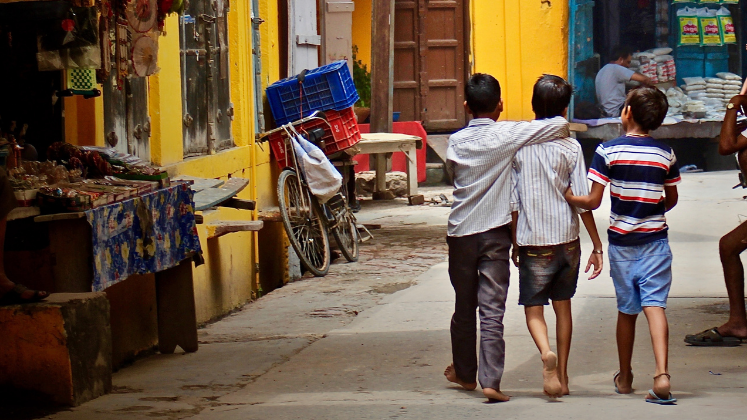In The Colonial Public and the Parsi Stage: The Making of the Theatre of Empire (1853-1893), Rashna Darius Nicholson presents a new account of the birth and coming of age of Parsi theatre in India in the second half of the nineteenth century. Successfully charting the transformations to this preeminent form of entertainment in late colonial South Asia, the book uses the interesting and under-examined lens of Parsi theatre to explore the ambivalences and dichotomies that marked the emergence of a vernacular public sphere in the period, writes Aparajita Mukhopadhyay.
The Colonial Public and the Parsi Stage: The Making of the Theatre of Empire (1853-1893). Rashna Darius Nicholson. Palgrave. 2021.
 Find this book (affiliate link):
Find this book (affiliate link): ![]()
True to its title, The Colonial Public and the Parsi Stage: The Making of the Theatre of Empire (1853-1893) interweaves two distinct yet interrelated stories. Author Rashna Darius Nicholson presents an engaging account of the birth and coming of age of Parsi theatre, contextualising it in the wider story of anti-colonial nationalism in late colonial India. This intertwining of cultural history, especially Theatre Studies, with the more widely known story of anti-colonial nationalism in South Asia provides the interesting and under-examined lens of Parsi theatre to understand the ambivalences and dichotomies that marked the emergence of a vernacular public sphere in late colonial India. It also shows their wider implications for competing visions of nation and belonging.
The Colonial Public and the Parsi Stage makes a strong case for examining ‘the making of the Theatre of Empire’ with reference to the political and colonial. This, the author argues, is vital because a Parsi public sphere (and a vernacular public sphere in colonial India more broadly) was a product of conversion to ‘colonial values’. Taking a leaf out of Sudipta Kaviraj’s work and extending it further, the author suggests the ‘discursive domain’ of the emerging Parsi public sphere was delineated directly and indirectly by the colonial state and was imbued with its norms.
This analysis of the nature of the Parsi public sphere is the main theme of Part One of the book. The three chapters in this section provide a detailed narrative of the contexts in which the Parsi public sphere and subsequently the Parsi theatre was born. Broadly speaking, these three chapters underscore what the author calls the ‘conversion’ of Parsis and their customs to colonial capitalist morality, largely, though not entirely, through the medium of vernacular newspapers, and how this process was marked by Parsis acknowledging/internalising ‘their civilizational otherness’. At a related level, the chapters argue that the Parsi theatre in its infancy (the 1850s and 1860s) fashioned a new Zoroastrianism, divesting it of ‘beliefs that provided alternative epistemological frameworks to the colonial order’, a process which created ‘monolithic imaginations of community with hard boundaries’.
The second part of the book analyses the spectacular stage effects and visual imagery that the Parsi theatre came to be known for, suggesting there was more to this display than met the eye. Elaborating this argument, Chapters Five and Six suggest that the ‘trivial fairy floss’ of the Parsi stage was in reality ‘powerful and insidious’. Through a ‘seemingly innocent alteration in a spiritual economy of representation’, it challenged ‘colonialism’s monumental project of knowing and its agenda of emancipatory progress’.
The third and concluding part of the book focuses more closely on the late colonial period (the 1870s) and demonstrates how Parsi theatre transformed into one of the ‘most significant arena[s] for the conceptualization of the politics of religion in colonial India’. The two chapters in the section elaborate on this theme by examining how Parsi theatre created an essentialised notion of indigenous (that is, Indian) femininity. This played a crucial role in imagining an India that was differentiated from the ‘colonial self’ while at the same time also engendering tensions between ethnic and religious communities. This process, the author suggests, created the parallel development of ‘South Asian proto-nationalism and proto-fascism’.

Image Credit: Desaturated version of ‘Edward Theatre’ by urbz licensed under CC BY 2.0
The book makes an important contribution to the field of Theatre Studies. It also provides a timely reminder of the historical complexities that continue to underpin post-colonial India’s predicament of squaring nationalism with demands imposed by diverse and competing/overlapping religious and ethnic identities. At the same time, one compelling question is: what is new and unique about this analysis, except in using Parsi theatre as an illustrative example? After all, the role of the vernacular public sphere in creating, transforming and shaping India’s responses to colonial rule is a story widely known.
Equally importantly, the main argument of this book rests upon the hypothesis of the complete hegemony of ‘colonial norms’ over Indians. What if this hegemony was less complete than the author suggests? If anything, the evidence presented in Chapters Seven and Eight suggests Indians engaged and contested ‘colonial values’ creatively and often in ways the colonial administration did not foresee. As such, the completeness of colonial hegemony requires further explanation.
There is a recurring suggestion in the book that the Parsi theatre contributed to competing visions of nationhood in late colonial India through issues around religious and social reform, because the colonial state enjoyed the hegemony of the ‘exterior’ domain, leaving Indians to compete over and define the ‘interior’. This claim is historically rather tenuous. This is mainly because the division of ‘exterior’ and ‘interior’ (first made famous by Partha Chatterjee) posits a rather unrealistic distinction between the ‘external’ and ‘internal’ aspects of the lives of the colonised.
For instance, though Parsi theatre created a prototype of ideal Indian femininity, this carefully crafted and ‘interiorised’ ideal was fractured by ‘exterior’ realities, including but not limited to legal provisions for the education of women, widow remarriage or the ‘age of consent’ that allowed Indian women (even if not many) to engage with the ‘women’s question’ to varying and often contradictory degrees. This is not to suggest women enjoyed a remarkable degree of agency in late colonial India. It is, however, illustrative of the limitations of adhering to a rigid distinction between ‘exterior’ and ‘interior’ domains in colonial India.
The oft-repeated claim in the book that Indians (especially elites in the early to mid-nineteenth century) ‘converted’ to the colonial administration’s ‘agenda of emancipatory progress’ could also do with revision. As recent research on the history of education, technology, science, medicine and environment in colonial India has revealed, Indian engagement with Western ideas, technologies and epistemology was both varied and complex and, crucially, involved a degree of genuine appreciation for new ideas while acknowledging their foreignness. In other words, Indians possessed the ability to disassociate notions and concepts from colonial ‘taint’ and use them for their own ends. There is another more pressing need to challenge this powerful meta-narrative because it assumes (perhaps unintentionally) that those Indians who favoured ‘western reforms’ did so because they either could not comprehend the hegemonic agenda of the colonial state or were complicit in it. The implications of this for post-colonial India cannot be starker, especially at a moment when individuals like Raja Rammohun Roy, Ishwar Chandra Vidyasagar and others are being branded as ‘traitors’ and their contributions are questioned.
Overall, this book presents an interesting story of a distinctive cultural phenomenon – the Parsi theatre – and successfully charts its transformation as the preeminent form of entertainment in late colonial South Asia.
Note: This review gives the views of the author, and not the position of the LSE Review of Books blog, or of the London School of Economics and Political Science. The LSE RB blog may receive a small commission if you choose to make a purchase through the above Amazon affiliate link. This is entirely independent of the coverage of the book on LSE Review of Books.







